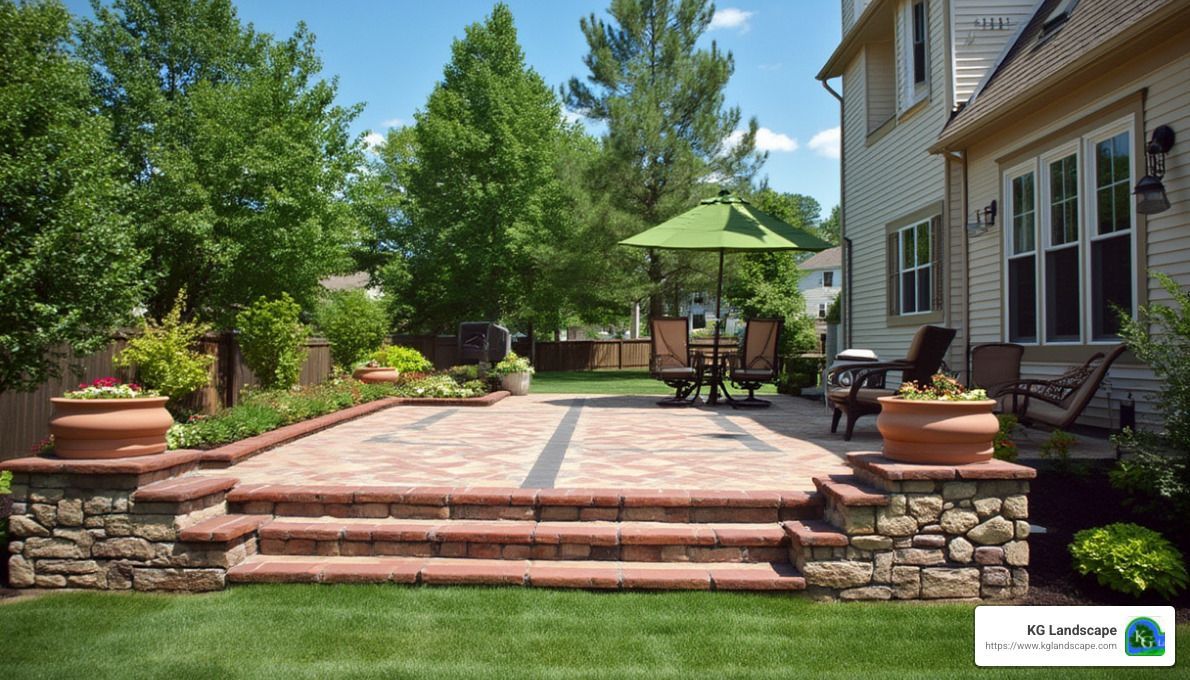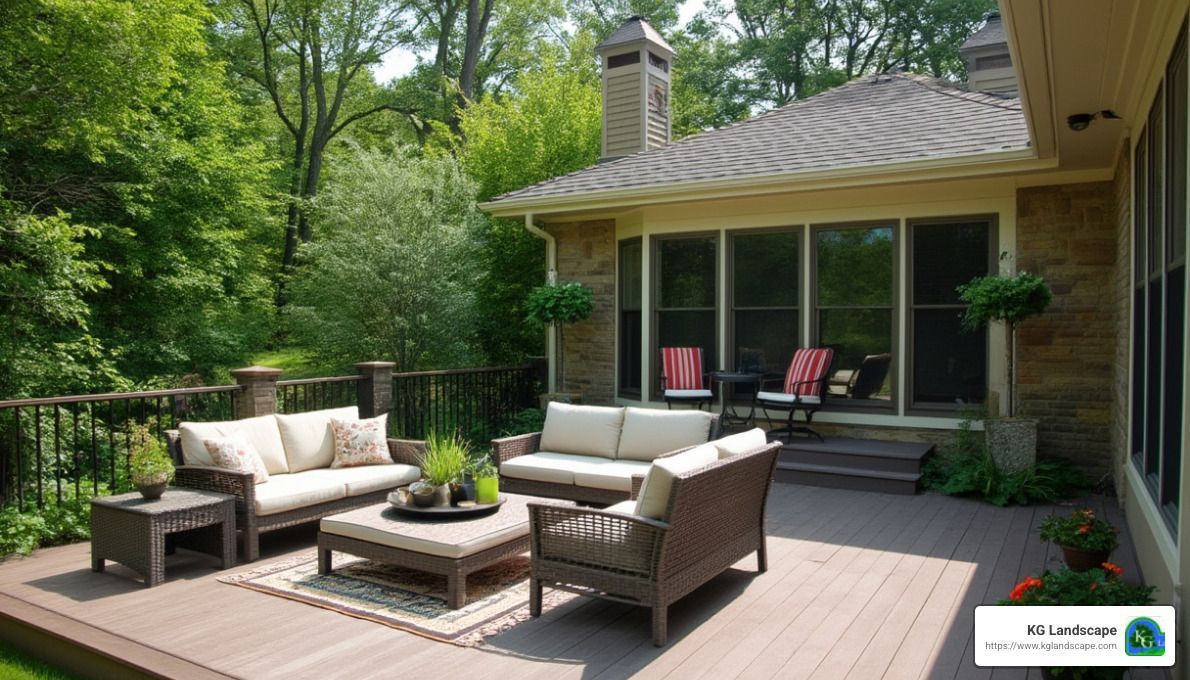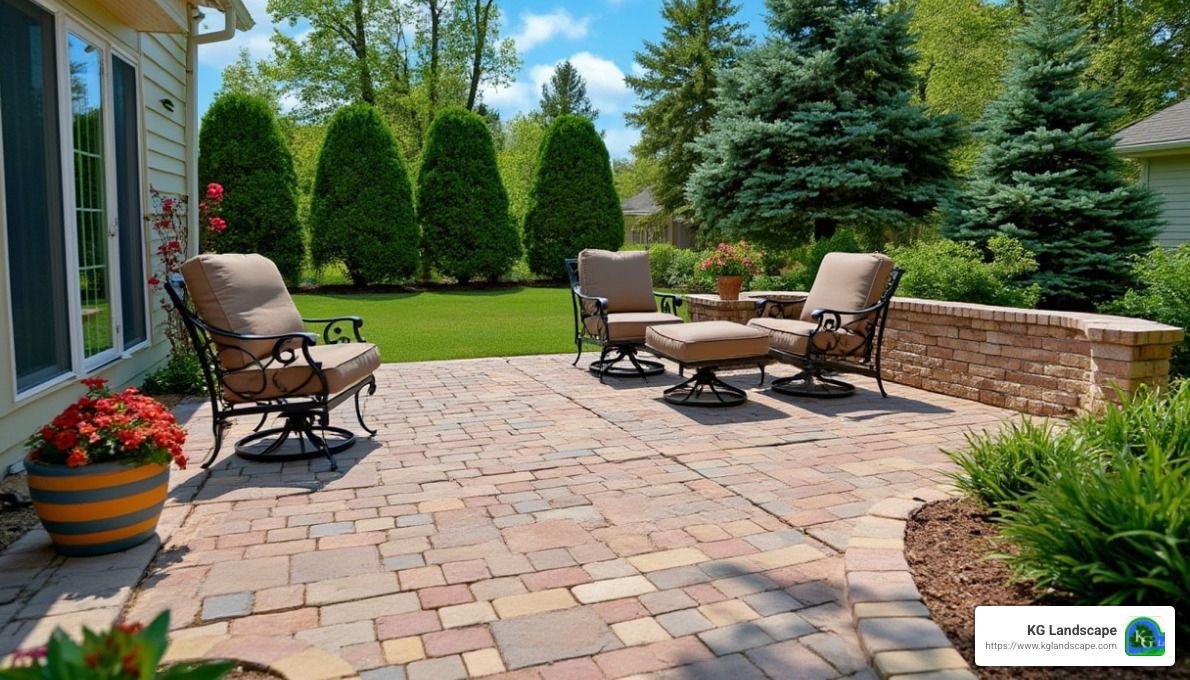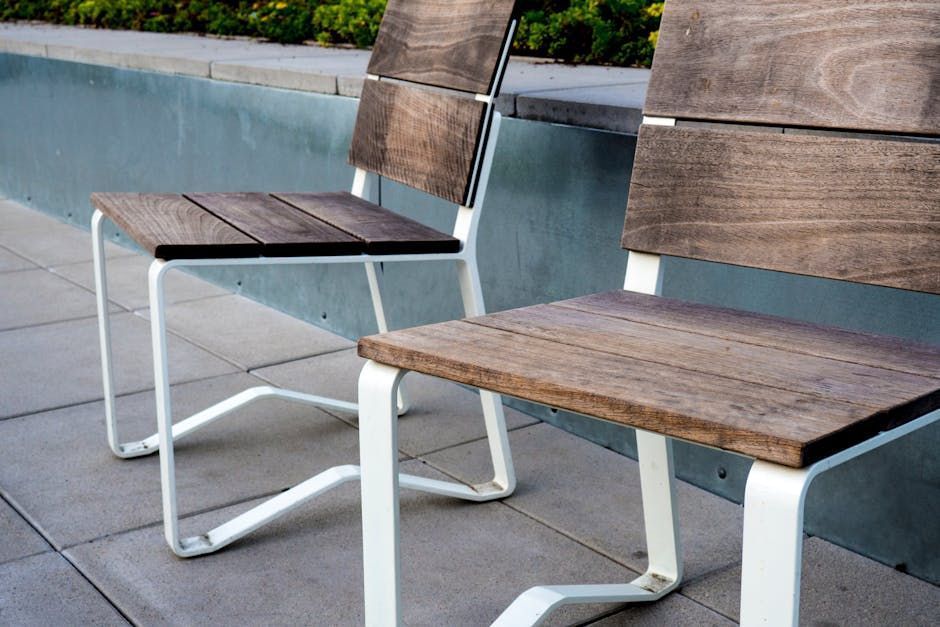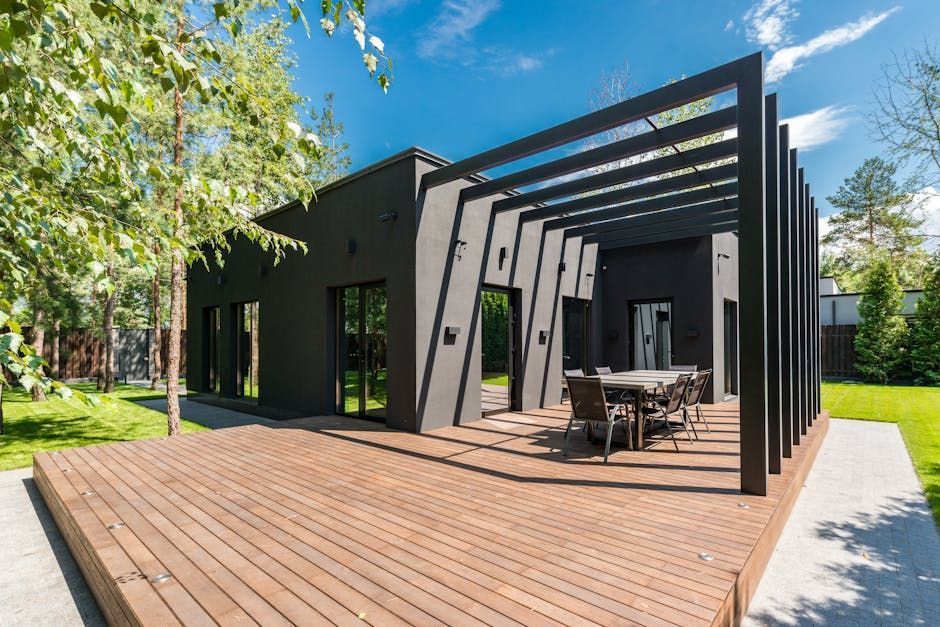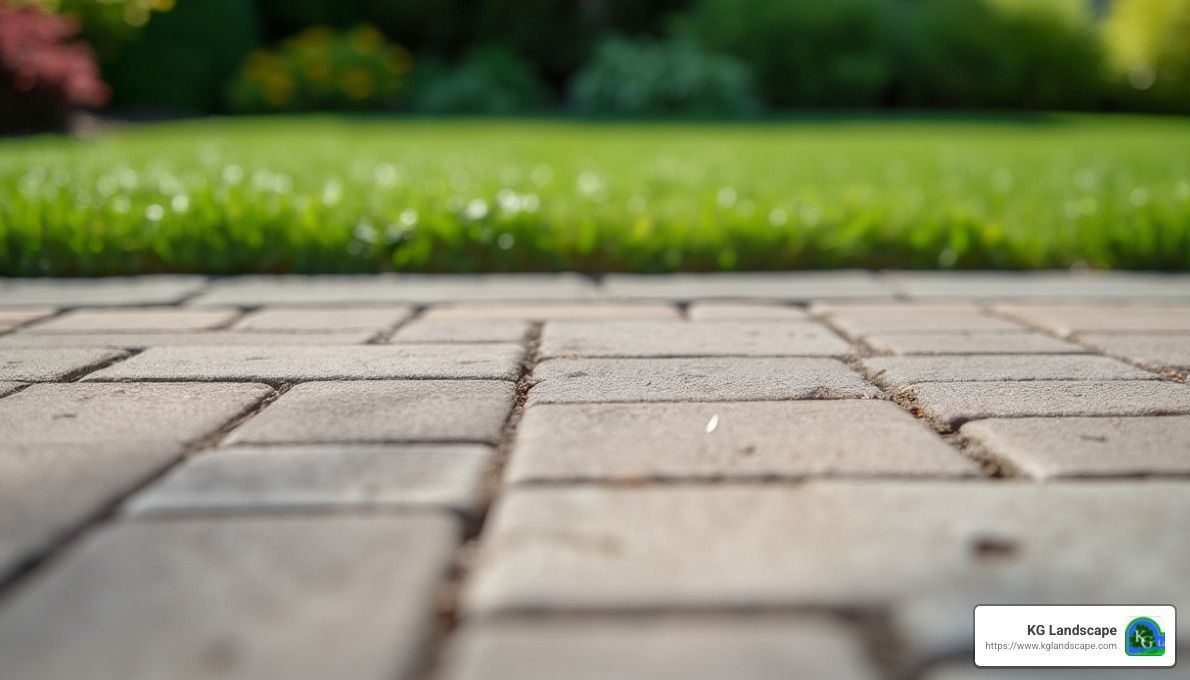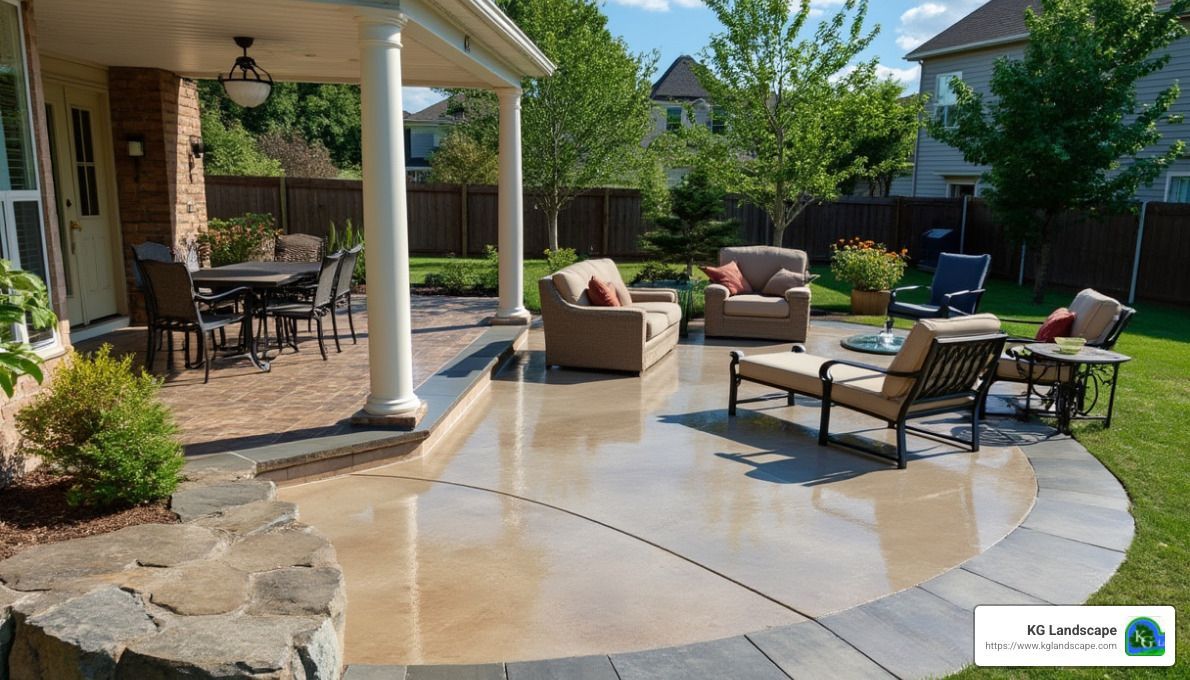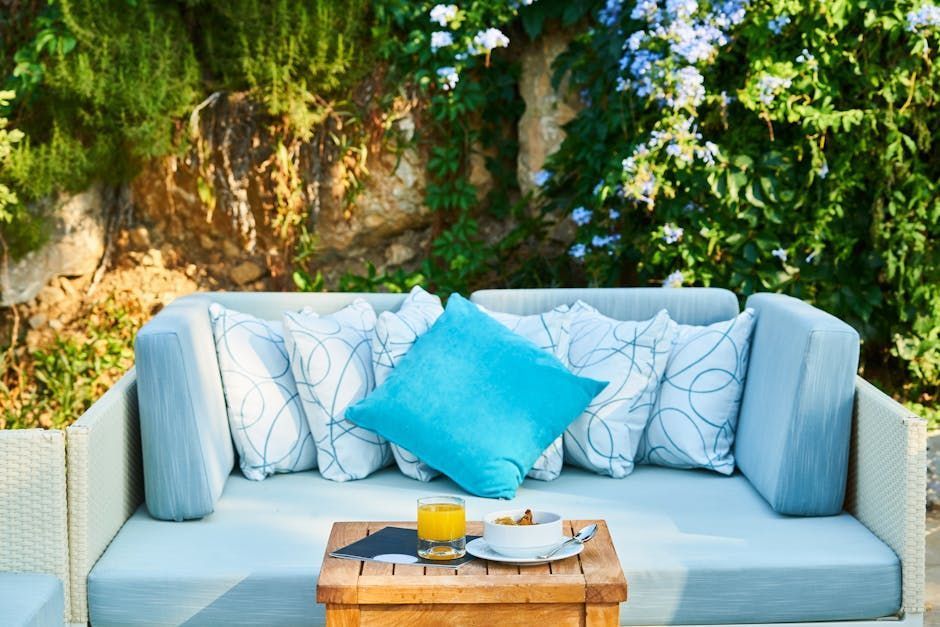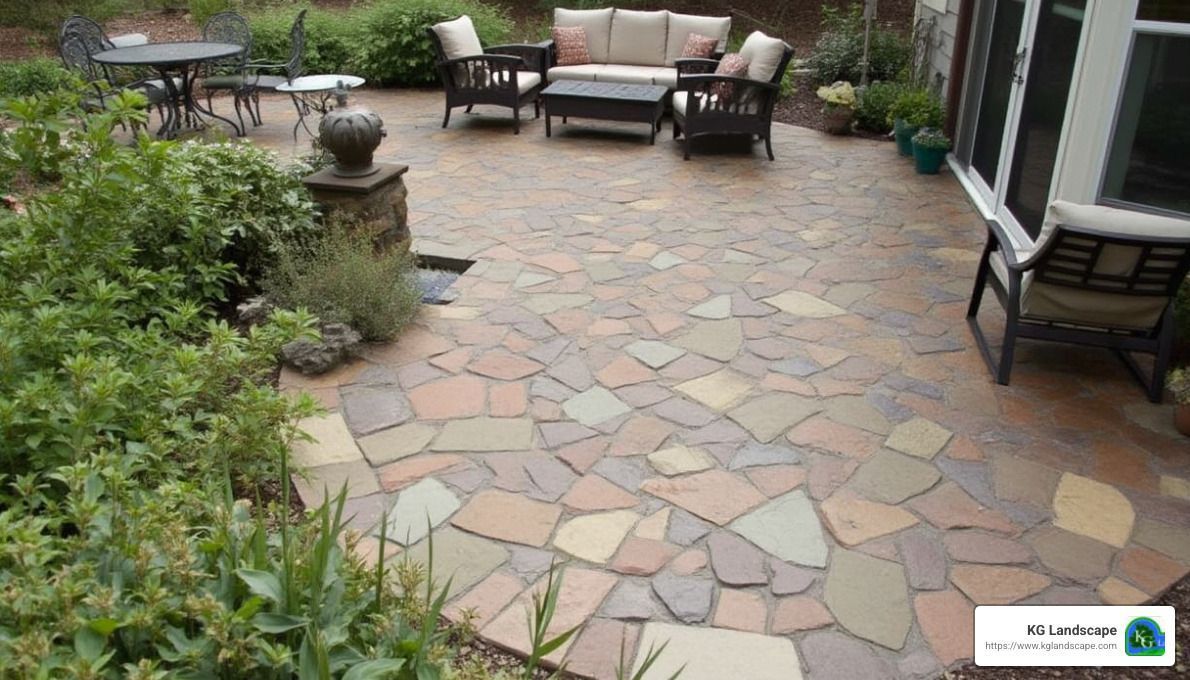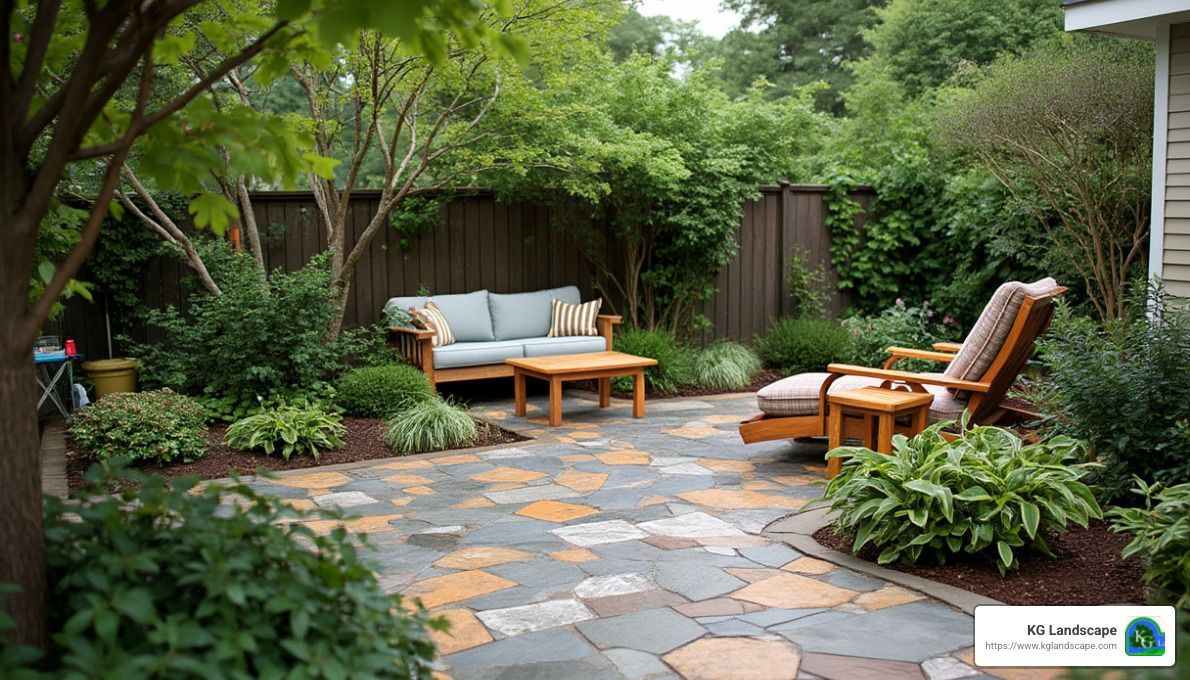Creative Hillside Landscaping Solutions: 12 Best Groundcover Plant Options for Sloped Yards & Hills
It can be pain in the neck to mow and maintain grass on a steep slope. Many homeowners think of landscaping solutions like retaining walls or boulder outcroppings to manage these steep hilly areas, but establishing a dense groundcover plantings on a hillside can be another great option to consider as well.
The idea, is that tightly spaced plantings can cover the entire slope with a dense planting that doesn’t need to be mowed. Groundcover plantings have a natural look and require little to no maintenance, other than occasional weeding to maintain.
Retaining walls and boulders work great for landscaping hills, but you’re looking something a little different and more natural looking perhaps, consider working with a MN
landscape design company to come up an with an interesting groundcover planting design solution for your hill. In addition to looking great, establishing groundcover plantings can also be very a cost-effective landscaping option for hillsides.
What are Groundcover Plantings & How Can They Be Useful on Hills?
Groundcovers are typical planted in large groupings, often referred to as mass plantings. These plantings can completely fill in a garden space or slope and “cover the ground,” overtime. These mass plantings help prevent soil and mulch erosion, because of their dense stem and root growth habits.
A key reason that we like groundcover plantings in particular for hills vs. typical plantings with gaps between plants, is that groundcovers are meant to fill in so densely that there is no need to add mulch between the plants once they fill in. For this reason, groundcover plants are considered lower maintenance. Not needing to re-mulch your hillside garden saves time, money and energy cleaning up mulch that tends to wash down the hills during heavy rains.
There are numerous options to choose from when it comes to selecting a great ground cover plant for your hillside and this article will discuss 12 excellent groundcover planting options to consider. When planning out a groundcover design and installation project, we will start by examining options based on the intended look/style, light conditions (how much sun exposure) and the amount of slope within each area of the yard. Slopes, hills, or changes in elevation will present different challenges compared to level ground; These include, erosion control, drainage options, and usage of the area. Although not required, we also often incorporate boulders to mix in texture within a ground-cover plantings in our landscape designs.
The benefits of using a groundcover are numerous, they provide a stabilizing element to the landscape and cutting down on erosion, they proved a vibrant look to any yard, and they proved a great alternative to installing more expensive hardscapes to your landscaping. Interested in other eco-friendly and low maintenance lawn solutions? Check out our blog on
Low Mow and Bee Friendly Lawn Ideas .
12 Excellent Groundcover Plant Type Options to Consider
List of Services
-
Pachysandra (pachysandra terminalis)List Item 1
Slow growing, deciduous, spreading evergreen perennial (its leaves stay green all winter, yes even in MN). When gown in a mass planting, it will form a dense ground cover. Very cold hardy plant.
Blooms: White, early spring
Size: 10” tall x 24” broad
Light Requirements: Partial shade, to full shade
Soil Type: adaptable, moist to well drained
-
Gro-low Sumac (Rhus aromatica)List Item 2
A fast-growing larger sized groundcover, that does well in tough and hard to grow areas. This plant is tough, very drought and heat tolerant. The foliage will turn vibrant red in the fall season well planted in patrial to full sun. Grow low sumac is likely the very best groundcover cover plant to use to erosion control (preventing soil was out) on steep hills, due to its dense stem growth habit and deep rooting structure.
Blooms: Yellow, early to mid-spring
Size: 24” tall x 6-8’ broad
Light Requirements: Full sun to partial shade
Soil Type: Just about any
-
Periwinkle / Vinca (Vinca minor)List Item 3
Sedums are a highly adaptive, succulent, drought tolerant plant variety that can be found in a wide range of flower blooms, vegetation coloring, and size. When choosing a sedum variety to use as a groundcover, we suggest one of the “Mat-forming” or “spreading” varieties. The “upright” varieties are used as part of perennial landscape beds rather than groundcovers.
Blooms: Depending on the variety, sedums can display yellow, red, pink, green, or blue, with a wide range of foliage colors as well ranging from green, to blue/purple and all the way to lime green.
Size: 3-6” tall x 18” wide
Light Requirements: Full sun, partial shade
Soil Type: Sandy, loamy, well drained (very drought and heat resistant)
-
Gro-low Sumac (Rhus aromatica)List Item 4
A fast-growing larger sized groundcover, that does well in tough and hard to grow areas. This plant is tough, very drought and heat tolerant. The foliage will turn vibrant red in the fall season well planted in patrial to full sun. Grow low sumac is likely the very best groundcover cover plant to use to erosion control (preventing soil was out) on steep hills, due to its dense stem growth habit and deep rooting structure.
Blooms: Yellow, early to mid-spring
Size: 24” tall x 6-8’ broad
Light Requirements: Full sun to partial shade
Soil Type: Just about any
-
Sweet Woodruff (Gallium odorata)
Performs well as a groundcover in shaded areas. Well suited for moist, well drained soils. Very cold hardy. Popular for woodland gardens with evergreen leaves
Blooms: White, early spring
Size: 6” tall x 12” wide
Light Requirements: Partial shade, shade
Soil Type: Prefers loamy soil
-
Ajuga (Ajuga reptans)
An attractive dense groundcover. The different Cultivars available display foliage ranging from dark burgundy to bronze. The different cultivars come in a range of bloom colors as well. Spreads by sending out wandering stolon’s (basically horizontal roots).
Blooms: Blue/purple/pink/or white depending on the cultivar, spring
Size: 6” tall x 18” broad
Light Requirements: Full sun, partial shade, shade
Soil Type: Well-drained, moist soil, drought resistant.
-
Creeping Juniper (Juniperus horzontalis)
Creeping Junipers include a variety of low growing evergreen shrubs that can be utilized as groundcover. The foliage can range from silvery-blue to golden-yellow to rich green.
Blooms: Evergreen, wide range of foliage color
Size: 18” tall x 3-6’ wide
Light Requirements: Full sun, partial shade
Soil Type: Dry, well drained, sandy soil
-
Creeping Phlox (Phlox sublate)
The phlox family includes a wide range of varieties. When it comes to using phlox as a ground, cover you want to choose varieties that are part of the “creeping”/sublata type. These types of phlox will display a gorgeous explosion of color in the early spring here in MN. Foliage is thin leaved, resembling a unique grass or sedge.
Blooms: Pink, blue, white, violet. Early spring
Size: 4-10” tall x 12” wide
Light Requirements: Full Sun
Soil Type: Tolerant of most types if soils, well drained is preferable, drought tolerant.
-
Lamium (Lamium maculatum)
The ground cover version of Lamium is a frost hardy plant that spreads by both seeds and stem rooting. The plant has a square stem, the different varieties can display a wide range of foliage patterns/variegation as well as a wide color range of flower blooms.
Blooms: Pink, purple, white, rose. Blooms in the spring
Size: 6” tall x 12” wide
Light Requirements: Partial shade, shade
Soil Type: Well-drained, clay, loam, sand, adaptable
-
Hosta’s (Plantain lilies)
While Hosta’s may not be considered a traditional ground cover in the sense that they do not spread via Rhizomes, like many other plants on this list: they do have a tendency to completely fill in shaded bed overtime by forming tightly spaces dense basil mounds. The Hosta plant family includes 100s of varieties, ranging between 1-4 feet tall and 1-5 wide, with most falling in the 2-3’ Tall by 2-3’ wide size range. Looking for some great Hosta ideas for the Minneapolis area? Check out our blog for a detailed list of the 10 Best Hostas for MN
Blooms: Wide range depending on the variety, can bloom between spring to fall
Size: Wide range depending on variety
Light Requirements: Partial shade to full shade
Soil Type: Rich loamy soil / adaptable
-
Wild Ginger (Asarum canadense)
A ground cover that does well in the shade, the red flower is typically hidden under its own foliage. Wild ginger will keep its foliage color thought out the season.
Blooms: Red, spring
Size: 8” tall x 15” broad
Light Requirements: Partial shade, shade
Soil Type: Sand, loam, clay
-
Lily of the Valley (Convallaria majalis)
A sweet-scented woodland flowering plant with bell like flowers. A great option for rich, well-drained soil in shady locations.
Blooms: White
Size: 8” tall x 12” broad
Light Requirements: Partial shade, shade
Soil Type: Moist, well-drained soil. It is versatile and will adapt to clay, sand, etc.
How many Plants will I Need to Fill in Your Garden Space or Hill?
Follow this link to an easy-to-use plant spacing calculator that will help you to quickly find out how many plants you will need to cover your hill any other garden space!
After reading this guide, let us know if you would like to have one of our experienced representatives out to help plan out a groundcover installation
Check
www.kglandscape.com to learn more about how we can help.

